tung oil finish on pine - any thoughts on maintenance?
Wondering if anyone has any experience with this finish in terms of maintenance. Our (old school) floor finisher is coming on Monday to do our pine floors, and his product of choice is tung oil. We'll have him stain first. Anything I should know?
Comments (45)
baton_rouge
18 years agolast modified: 9 years agoI have tung oil on my " solid red oak floors after having them stained a brownish red. I also had an "old school" floor installer/finisher. This was new construction. Most of the flooring contractors donÂt want to do the tung oil (very time consuming) or they have had no experience with it. I have had a lot of experience with tung oil, I grew up in my motherÂs ancestral home that was built in about 1872 and her floors have always been oiled. Her floors are gorgeous as mine are too. I would post a photo of my floors but as of now I am not comfortable posting photos of my home on the internet.
Oiled floors are VERY easy to take care of. When you get a scratch on your floor, all you have to do is apply the tung oil and buff it out. My mother never had her floors sanded, she just had a guy apply more oil with rags, wipe it off and then buff with a soft rag.
I donÂt think you will see many complaints from people on this board who have oiled floors complaining about scratches on their oiled floors. Most of the complaints are from people who have prefinished or poly on their floor. The scratches really show up on those floors.
I think your pine floors will look beautiful with a tung oil finish. Just be sure it is 100% tung oil.
Elizabeth Anne
jrdwyer
18 years agolast modified: 9 years agoIf you have not made up your mind on using 100% tung oil, then you might want to consider a combination product like Waterlox. This is a mix of tung oil and resins and offers some advantages to 100% tung oil in terms of durability and water spotting. The durability comes from a slight surface build-up on coats 3 and 4. The lack of water spotting comes from the resins. Just another option.
Related Professionals
Chandler Flooring Contractors · Desert Hot Springs Flooring Contractors · Fox Chapel Flooring Contractors · Oxford Flooring Contractors · Truckee Flooring Contractors · Rancho Mirage Tile and Stone Contractors · Chillicothe General Contractors · Elmont General Contractors · Halfway General Contractors · Hartford General Contractors · Ken Caryl General Contractors · Mankato General Contractors · Marietta General Contractors · San Carlos Park General Contractors · Valley Stream General Contractorscaseyb
Original Author18 years agolast modified: 9 years agoThank you so much, Elizabeth and jrdwyer. Evidently, our finisher prefers the waterlox-type product (may be exactly that, but I can't recall). DH has already purchased the product. We are now thinking of not staining first, but just oiling. DH (and MIL, whom I love) think that this will be better in terms of not highlighting the difference between the two batches of wood we've mixed for the floor (they are both old, but one is reclaimed from rafters and darker, and narrower, and the other was just sitting around as boards in a barn for 50 years, lighter and wider). Seems like a reasonable thought to me. (I wonder if the tung oil product will color them at all, or if this is a clear product? I have not seen it yet.)
I love the idea that this will be easier to maintain in terms of repairing scratches (hopefully the waterlox will behave almost as well as the straight tung oil). And now I have another question - is this the type of floor for which Murphy's Oil Soap is recommended? What is my best bet for cleaning/maintenance?
Thanks again!
gadgetobsessed
18 years agolast modified: 9 years agoI have another question about using tung oil - we are considering using it (or a combination product) on 2 yet-to-be installed hardwood floors and are trying to compare its positives & negatives to polyurethane. Someone at the local lumber supply shop suggested that a tung oiled floor would be a dust & dirt magnet. Can Elizabeth - or anyone else - shed any light on that?
corgilvr
18 years agolast modified: 9 years agoI just sanded an old floor and applied Waterlox myself. The most difficult part of the sanding process was getting the heavy rented sander up to the second floor for the initial sanding of the old finish. After that sanding, I applied 4 coats of Waterlox sanding only between coats 3 and 4. I am so satisfied with the finish and saved almost $900 by doing the work myself. I used a random orbital palm sander for the sanding between the last coats.
The floor feels very clean and I notice no increase in dust or dog hair as compared to all the other hardwood in the house. I now look forward to doing the rest of my floors.
I have used tung oil on furniture and have it on my cherry kitchen counters. This is my first Waterlox project and I am very pleased with the result.
jrdwyer
18 years agolast modified: 9 years agoThere are not many pictures on the internet of oil finished floors. The Waterlox site has some, but they don't give good detail. The flooring retailers based in the U.K. that sell oiled floors also have a few pictures. The best site I have found is from a wood countertop company that uses Waterlox. This link shows Waterlox on a variety of hardwoods and pine with great details. Look through the photo gallery and woods available pictures.
If there are distinct differences in color or shade between boards, then a medium to dark stain should help to darken the lighter boards enough to minimize contrast. Another option is to add oil based stain, tint, or dye to Waterlox for the sealer coats, followed up by just regular Waterlox for the top coats. You will have to experiment first. Waterlox sell trial sized packages for this purpose. I believe any stained floor will show color changes with deep scratches or gouges that go through the stain (Dog claws, dropped hammer).
Waterlox says their product is non yellowing, so it might not appear as ambered over time as an oil based urethane floor. Then again, oils do soak into the wood and give it a much deeper appearance and a slightly darker tone than a straight water based finish on top of the wood.
baton_rouge
18 years agolast modified: 9 years agoNo, I would not use Murphys Oil Soap to clean your oiled floors. I use a barely damp mop to mop all my wood floors, nothing else. I dip my mop into a bucket of warm water and wring out the mop until just damp, then go over the floor lightly with the mop. In between the damp mopping, I just use a regular dust mop. Once or twice a year, I use ¼ cup Spic and Span to 1 gal. warm water to clean my kitchen floor. In the rest of the house (all bathrooms and laundry room are tiled) I just dust mop and occasionally use a damp mop on those floors. I see no reason to buy all those "special" cleaners to clean your floor and have never had a problem with the way I take care of my floors and I am pretty fussy about my floors but not obsessed with them.
No, oiled floors are not a dust & dirt magnet! The tung oil soaks into the wood, there is no oily residue left on your floors. Just a beautiful matte finish. Also, I have never had a problem with water spotting. If water is spilled on my floors, the water beads up.
The reason I stated use 100% tung oil, some tung oil products have additives such as VARNISH. I would stay away from varnish. My floor finisher added mineral spirits to thin the tung oil before he applied it. He did all this (4 coats) on his hands and knees with rags after first staining my floor.
Elizabeth Anne
Cate_CO
18 years agolast modified: 9 years agoI really wanted a tung oil finish on our heart pine floors, but was talked out of it. I have no idea if what I was told is correct but our installer had experience with it and said in arid climates (we live in Colorado) it didn't hold up well. Not sure if it's true, just what he told us. He said it dried out quickly and needed repeated applications. We ended up going with a poly (oil poly, followed by two coats of Traffic water poly). We're happy with the look, very matte, and it's holding up well with our golden retriever. Just my 2 cents. We visited the Carlisle showroom where we purchased our wood and I really did love the look of the tung oil finish, but just didn't want to take the chance on something I was unfamiliar with.
caseyb
Original Author18 years agolast modified: 9 years agoThank you all for the additional comments and advice. Elizabeth- I am particularly grateful for the advice on cleaning. I had originally thought we would use a urethane, and thus did not plan on using the oil soap. I wondered if the tung oil finish would 'appreciate' such a product. I suspect I will use a bit of vinegar or a drop of mild dishsoap in the water occassionally to mop, but otherwise will probably treat them much as you do. Our floors will *all* be pine, including bath and kitchen, except in the basement.
Re: the question of varnish in the tung oil, I think that the waterproofing element is some kind of eurethane? I forgot to look this weekend, but I think it is the Waterlox stuff. $60 or 70 per container- hope it's great!vfowler
18 years agolast modified: 9 years agoI used Tung Oil on my old previously urethaned-finished floors of 40 years ago. The polyurethane had worn off and it was time to refinish them. At the time, I could not afford it, so I decided to use Tung Oil, as I had used Tung Oil on rustic furniture and loved it. The floors came out great! They look so natural and are very durable. I do not have to worry about scratches and dings, etc., as you really cannot see them like you can on polyurethaned floors. Water also seems to "bead up" and cause no problems. The only problem I occasionally have is if one of my cats "barfs" on it and it sits a while. I guess the acidity in the barf make for a "mark." However, its very easy to fix....just rub a bit of tung oil on the small cleaned area, buff it, and bingo...it looks like the same as it did before and blends in with the rest of the floor.
Tung oil (or any oil) will turn the wood a slightly darker color. If I were you, I would not use any stain...let the tung oil do its thing and it will look more natural. As for washing it, I do the same thing as baton rouge....I just damp mop it occasionally. The rest of the time I just sweep with a broom. And no, it is not a dust/dirt magnet at all!
By the way, if you happen to run out of 100% tung oil (sometimes hard to find), you can use other oils for "repairs" if needed....like orange oil, even linseed oil (though be careful with wet linseed oil around heat).
Glad to hear others are using oil instead of poly! The "old school" certainly has its advantages!
Vickimorgan88
18 years agolast modified: 9 years agoour 1907 farm house is full of waxed wood floors needing a boost. would a tung oil finish be easier to maintain than this wax finish? how would one make the transition? i'm looking for a beautiful non-fussy matte wood floor. i don't like poly finishes or shiny surfaces and this tung oil finish sounds very interesting.
baton_rouge
18 years agolast modified: 9 years agoMorgan88:
I think you would have to remove all the old wax from your floors. The tung oil will not soak into the wood if there is wax or another kind of finish on your floor. Do you know what kind of finish is under the wax? Probably it would be varnish or shellac. That too has to be removed, so I guess you would have to sand those finishes off before you can use tung oil. I'm not an expert on this, so maybe someone who has experienced this can give you a better answer.I do know that some people use wax over there oiled floors to give it more of a shine/gloss but I think that is really going to far and a waste of time. Who wants to spend time waxing wood floors? Not me!
I think the oiled floors would really look nice in your 1907 farm house. But you really have to be sure that you want an oil finish. I don't think you can sand all the oil off to put poly on later if you decide you want a poly finish.
Elizabeth Anne
baton_rouge
18 years agolast modified: 9 years agoMorgan88:
I forgot to add if your wood floors have no varnish or shellac finish under the wax, just wax over bare/stained wood, then I think all you need to do is buy a wax stripper product to remove the wax. Then apply the oil.
Elizabeth Anne
morgan88
18 years agolast modified: 9 years agothanks. the downstairs floors might be tricky, but the floors upstairs are practically raw. wide boards with no wax and maybe stain from long ago.
jrdwyer
18 years agolast modified: 9 years agoFor anyone debating the pluses and minuses of various wood finishing techniques, I recommend reading some of the wood finishing message boards that are out there. I like Woodmagazine.com's board. This site requires you to register before using.
I will post a picture of my Waterlox samples on red and white oak when I get the last two satin coats finished and dryed next week.
caseyb
Original Author18 years agolast modified: 9 years agoJust wanted to let everyone know that our floors are done (4 coats) and they are stunning. The darker and lighter boards (unstained) look great together, and the tung oil gave all a nice amber (on the yellow side, rather than very orange) glow. It blows my mind to see them done! I cleaned the kitchen yesterday and I am ready to move in now! Will get photos up soon, and will report on wear.
Thanks for the advice.
draconisskye
18 years agolast modified: 9 years agoSo does anyone have any pictures or comments on their Waterlox finished floors? I'm debating between Waterlox and a water-based polyurethane finish when we refinish our original maple floors next month. Would love some more information on how the Waterlox affected the wood color and how the finish is holding up.
jrdwyer
18 years agolast modified: 9 years agoWaterlox does impart some darkening to wood compared to other lighter oil/varnish formulations and is much darker than straight water based finishes. Waterlox claims it does not yellow over time, but most oil based varnishes will amber somewhat. I don't have a finished floor to show yet, but here are some pictures of Waterlox on rift and quartered red oak and white oak samples. The intensity of color depends on the lighting.
I would expect any oil finish to greatly highlight the depth of grain in Hard Maple. Maple has a tendency to be splotchy or striped when stained.
The professional finishers often use an oil sealer coat followed by commerical water-based surface coats for deeper color. I believe the commercial water-based finishes are the most durable site application finishes you can get.
Waterlox and/or straight oil finishes are easier to spot repair.
alicesRestaurant
18 years agolast modified: 9 years agoMy concern is the toxicity of tung oil. As I understand it, there is no problem once it is dry but during the time you are applying it and waiting for it to dry, you should wear a respirator mask.
Must you move your pets to a kennel and your family to a hotel while you are putting 4 or more coats of tung oil on your floor? Anyone deal with this issue?
I've just spent several thousand dollars getting all the arsenic out of my system (not sure where it came from) so I'm much more sensitive to "toxicity issues" these days.
sharon_sd
18 years agolast modified: 9 years agoPure tung oil is a food safe oil. That is, you can put it on salad bowls and still eat the salad. That rating doesn't depend on it being dry. It is made from the nut of a tree grown primarily in China.
Unless the additives are a problem, and the manfacturer should provide that information, I have never been concerned about breathing fumes from tung oil.
alicesRestaurant
18 years agolast modified: 9 years agoI'm pretty sure Waterlox is not pure tung oil. Neither are many of the tung oil products from Cabot's. I think you want the additives because they help the oil penetrate the wood better from what I've read (doing a google search) but I don't want the toxicity of the additives.
ninajc
18 years agolast modified: 9 years agoI think the floors in our 1905 house are pine, certainly not urethaned (or poly-urethaned), seem to have been stained, but how can I tell the difference between varnish and stain??
They are a golden, reddish color with some water marks and some scratches, so I'd like to use this legendary tung oil but I need to understand the point I'm starting from. I'd really like to avoid sanding at this time for a variety of reasons.I knew I was on the right post when I saw that "cat barf" entry! That has been our one contribution to the floor since moving in. He yakked on the dining room floor and despite my speed to clean up, it left a lighter mark. (He was proud, we were terrified!)
So, can I move straight to tung oil right now?!!!
Thanks, folks.
ninajc
woodswell
18 years agolast modified: 9 years agoninajc,
If yom want to preserve the deep stained or naturally aged patina of your floor, you may want to strip them rather than sand. The Real Milk Paint Company has great information on stripping and refinishing with tung oil:100% PURE TUNG OIL
How to Finish a Floor with Pure Tung Oil
Soy-Gel Professional Paint StripperThe article below is one person's experience with doing this.
elphaba_gw
18 years agolast modified: 9 years agoThanks, woodswell for the links. I found some info on Hardwax OS which is an oil finish recommended by the guy running the website at www.woodfloorist.com
Below is some info I've collected there and other places after searching using google. I like the fact that Hardwax Oil seems to be very environmentally safe, something I still have some doubts about with Tung oil (before it is dried). Still checking.
One source for OS Hardwax Oil at Hardwax OS source - Boulder, Colo
Below is from: flooringnews.com
Tips: Oil based polyurethane versus Street Shoe
Posted on Tuesday, July 05 @ 15:11:15 PDT by flooringnewsFlooring Articles woodflooristcom writes "I recently
received the following email.Thanks for offering to answer my questions. My son bought a house built in 1935. It has oak floors throughout. He asked a flooring company for an estimate.
He got the following answer about finishing options: oil based polyurethane versus Street shoe?
What would be the better choice and how many coats?
I really appreciate your help.
Thanks,
Ursula
This is my reply:Either of these finishes would be fine. I myself use neither. I use a German Finish called OS Hardwax Oil see OS Hardwax Oil
It is environmentally friendly, easy for homeowners to apply and is repairable without resurfacing the whole floor.
The easy for home owners to apply works well with my "I Teach Wood Floors" concept. I have had a number of jobs where I have helped with the install and/or sanding and with a 5 minute lesson the customer does all the finishing with great results. This saves them from having to pay me for something they can do.
I use 2 to three coats of this product. Customers love the fact that there is little or no smell. It took me a little bit of adjustment to get used to a product that had the words "Hard", "Wax" and "Oil" in it as I learn the trade on Gym floors using Urethanes and epoxies.
Franklyn
I Teach Wood Floors"
===========
Note:
http://woodfloorist.com/==================
Re: OS Hardwax Oil
12/07/04 06:38 AM
Edit post Edit Reply to this post Reply Reply to this post Quote Quick Reply Quick ReplyChyna
You may have to do a search on the internet to find it. The stuff is expensive, but goes a long way: 2.5 liter can will cover 250 square feet.
Here is some info I pulled off the net.
"OS Color Hardwax oil is a professional, satin-matt floor finish of particular durability and resistance for solid wood and cork floors. It meets wood's natural demands: it is micro-porous, water-repellent, dirt resistant and treadfast. It will not crack, flake, peel or blister and will keep your existing flooring in good shape for decades.Hardwax Oil is made mostly from readily renewable, natural ingredients. It contains no biocides or preservatives, only aliphatic, low-odor, benzole-free, disaromatized mineral spirits that meet the German standard from purity. It is so safe that when dry it meets European safety standards for use on children's furniture and toys."
Bear Creek Cabinets
Libby, Montananinajc
18 years agolast modified: 9 years agoThanks, I now have info to choose from. In the meantime, I feel better putting down a an area rug, until I do my research, and find some free time to do the floors. How long is the drying time between coats of tung oil (or the OS wax oil mentioned)?
Nina
gingy
18 years agolast modified: 9 years agoThis is gr8 info, but i haven't has anyone ever used something called marine oil it is used on teak ships.
we are considering using it on a tub surround made out of red oak, obviously htis will come into contact with lots of water.corgilvr
18 years agolast modified: 9 years agoDoea the "marine oil" have spar varnish added to the oil/thinner blend? Woodworking magazine had a recipe for this in an issue on finishing.
tangerine_z6
17 years agolast modified: 9 years agoWould anyone care to update this thread with their pine floor refinishing experiences, having used tung oil or not? This was a very interesting topic for me as I am contemplating buying a c.1895 house with pine floors in the living and dining rooms.
What do I know about pine? Nothing...I would have thought it too soft to use for a floor, and is there a reason other than personal preference for them to be ebony colored? The color isn't bad, it just makes the rooms smaller. Would love to hear any information you have on this. Thanks.
chalita
16 years agolast modified: 9 years agoI have found this thread very useful. Let me sum it up to see if i got it all right. linseed has been used longer in this country but is not as durable as tung oil. tung oil mixed with resin (waterlox) is the most durable. linseed oil takes longer to cure and should be boiled rather than refined. how am i doing?
i have old growth pine in my 1860's city home that i have recently sanded down to bare wood. I like the light colour. being a painter i had some refined linseed oil on hand and decided to test a patch. l it turns really dark red. i like the red but its too dark. does the tung oil not darken the wood as much? i keep hearing people say amber which to me is orangish and not what i am looking for. if i put less oil on the wood it gives a lighter result however i feel that the wood really needs the moisture, its been under several layers of linoleum and carpet for 90 years or so. i was thinking of applying a wood conditioner prior to oiling or is this unnecessary?
I havent seen any good pictures of the floors and oils mentioned
hear are some of minethanks
dave2007
16 years agolast modified: 9 years agoYou may be interested that this company sells southern pine flooring recycled from old construction and they market an oil system from Denmark. Perhaps it would be worth contacting them for advice with oil finish on pine.
http://www.woodcareusa.com/products-heartplank.html
We just had our oak floors done with this cured oil system which is worth investigating. They have there own wet mop cleaning soap for maintenance, otherwise repairs, etc. are made with scrubbing and a little more oil.
eandhl
16 years agolast modified: 9 years agoWe have new pine floors and used the 100% natural Land Ark oil system. They look beautiful and feel like silk. In heavy traffic areas you can clean the floor and touch up.
gardenroy
15 years agolast modified: 9 years agoMy recommendation: use 100% Tung Oil, not Waterlox,
IF you are concerned about toxicity or generally value your nervous system and the environment.100% Tung Oil has a VOC rating of 9 g/L,
Waterlox is around 650 g/L
(granted, that is the regular Waterlox, not low VOC).Don't even get me started about urethane finishes, not worth
it chemically, and they don't even look or function better.
With the natural oil finishes, you never have to refinish again!I am pretty sensitive to chemicals, having been a professional painter for over 10 years, and I finished my
floors with the Tung Oil with the windows closed and had no problems.
I finished my exterior deck on a beautiful windy clear day with Waterlox and felt the effects for days. Respirators can help some, but many don't actually filter a lot of the vapors you would want them to.I also happen to feel that the Tung Oil is a more beautiful finish. My reclaimed maple floors look and feel amazing. I started with a heated linseed/turp mixture, then a layer of straight linseed, then a few coats of 100% Tung Oil, cut with thinner. The linseed a woodworker friend recommended as a cheaper way to lay a base oil before applying the final finishes with Tung.
As for Murphy's oil soap, I've read (also on www.RealMilkPaint.com), that the Murphy's can break the finish down quicker. I'm a long-time fan of water and vinegar, myself.
Do it! Enjoy years of beautifully functional wood in good health!
mon541
15 years agolast modified: 9 years agoI just had to say we bought a prefinished solid wood floor from Morgan and Teach and their finish is a tung oil. It is an amazing look and feel. They use a mix of tung oil and lemon oil along with something else? It is "food safe" and really easy to take care of. They explained to us how all the old homes have wood floors with nothing but tung oil on them and they've lasted hundreds of years. Our floor defintely does not have that plastic look to it. Check them out, they are worth looking into.
ccoombs1
15 years agolast modified: 9 years agoThe high VOC's in waterlox is really a non-issue if you take the right precautions. Go to lowes and get a paint respirator for around $25. I used it while applying my waterlox and smelled nothing at all. After the last coat, the house aired out for 7 days and we moved in. No problems at all and the finish is gorgeous!
catwat
15 years agolast modified: 9 years agoWe are installing white or red pine wideplank floors in our kitchen/dining room and while I love the look and am excited about the project, I am having trouble getting past the orangey hue on the samples, finished with tung oil. Will an oil-based polyurethane finish leave it less orange looking? Or will the orangi-ness of the tung oil eventually soften? I know the water-based poly is a bit too "white." Any suggestions?
tk-421
15 years agolast modified: 9 years agoI have to say in regards to Waterlox: it is a wonderful finish when first applied.
For the record I have laid yellow/heart pine and used poly to finish, I laid 900sq' of eastern white pine and covered with Waterlox.
We built our own home 4 years ago and used waterlox original on the entire 900sq' of the downstairs. It gave is a yellow orange tint which is eactly what we wanted. It did darken over the 3 years we lived there as when we moved last week and lifted the rugs there was a very noticable difference in coloration.
Application was horrible. I used a quality paint respirator in january. Since it was cold I had the windows closed. Eyes burned so I used goggles. When I would take the respirator off to readjust etc the fumes almost knocked me out. After the 4 coats over 2 days I shut up the house (opened windows at timed intervals to allow new air in). About 3 weeks later we moved in and could still smell the waterlox. A few days before we sold our house I did some touchup work since our yellow lab left several claw marks down below the finish. I simply put a little waterlox on a rag and applied by hand the 1'x1' area. You could smell it upstairs with the door closed. We had to open windows in january.
Waterlox finish very much resembles poly. It never chipped on us but had the same type of appearance with the scratches.
Repairs. Don't let anyone fool you. If you have a dog scratch your floor and it is deep you now have fresh unstained, unweathered wood showing. It will look very white next to the tinted weathered finish. You can apply new waterlox but it will not tint the scratches to match the finished side adjacent to it. It will reseal it and tint it a bit but you are going to see the scratches. Not as bad a poly, but you will see them clearly.
Fast forward. Economy goes bad, decide to sell our home and purchase a cheaper fixer upper and try to pocket a little cash in case of job loss.
The new home has pergo, yuck.
I have already found a dealer for red pine this time. (should be a bit harder than the eastern white pine we had in the last home.) Plan on installing red pine in the entire house less the 2 bathrooms. Equates to about 2000sq'.The big debate. Tongue oil or more waterlox. We did lover the finish of the Waterlox and always got great compliments on the floor from guests.
I don't really want to evict my family(young child) from the home for 7-10 days while the new finish gases off while drying.
I have heard mixed reviews on the citrus solvent as being almost as bad for you as mineral spirits.
I loved the finish of the waterlox and it did bead up nicely and cleaned well.
I have never used the tongue oil and hope I am not making a mistake by taking that route. We love the matte finish of the waterlox along with the slippery feel to it. Does the tongue oil leave a smooth slippery texture also or do you feel the wood grain more? I have used a marine based tongue oil on a boat I built and that was not something I would want to walk on every day.
dehutch
14 years agolast modified: 9 years agoI'm confused about what tung oil does and doesn't do. I'm getting that the PURE stuff is so healthy that it can be put on your salad but maybe it doesn't amber your unfinished wood floor. I want something that's going to darken my wood to that amber color and I was told that tung oil was the way to go. I'm thinking of laying a Cherry wood floor. It can be mixed with other chemicals which may or may not be a good idea.Is it the mix that ambers and gets darker over time?
dehutch
14 years agolast modified: 9 years agoDoes anyone have pictures of tung oil applied to red oak. A local dealer has samples of tung oil applied to Cherry. I love the color. Anyone know if their close in color? The red oak is less expensive but slightly harder wood.
nancyusa
14 years agolast modified: 9 years agoBought house with new floors finished with tung oil. The company that finished and installed the floors recommends a yearly reapplication of oil to maintain the floors. Said company, Olde Boards, doesn't provide their product for homeowners.
The floors haven't been re-oiled for 3 years and need some areas touched up. There are some scuff marks from the previous owners.
I've been cleaning the floors with plain water and occasionally with Murphy's oil soap. I am going to stop using the oil soap after reading Murphy's website.
The wood is probably walnut and the floors are lovely, no orange color at all...see picture at link.
I am going to try stop repair with the milkpaint product mentioned above. Note the milkpaint company has a product called dark tung oil with some color added.
fishwormroad
13 years agolast modified: 9 years agoHas anyone used 100% tung oil AND Waterlox before and if so, does one product beat out the other?
Also, any brand recommendations for a 100% oil product?
sawmill
13 years agolast modified: 9 years agoWe are looking at installing mahogany floors that would include a kitchen. Recently we are leaning toward using a tung oil finish instead of polyurethane. Do we have a greater risk of water damage in the kitchen with a tung oil finish? We've had poly-finished oak in another kitchen with no problems.
amarykinwoman_sbcglobal_net
12 years agolast modified: 9 years agoAny thoughts out there on a product called Dura Seal?
miirakostava_skymesh_com_au
12 years agolast modified: 9 years agoWe are in Australia. We have Golden Penda floors that we have just sanded and treated with 100% tung oil thinned with turps, (2 soaking coats as according to our advice). However in just four weeks we have a large amount of wearing in front of the doors and numerous scratches, we also have some water spots where the fridge leaked when we moved back in. Can anyone tell us what may have gone wrong with the durability here, and how we can fix it so that further coats are maintained.
Miss Alisha
8 years agoWe finished our wide pine floor boards that were from a mill ( same pine we installed on the walls) with dark tung oil. We used 6 coats and its super smooth soft matte finish. Incredibly time cpnsuming compared to poly...but non toxic and we can apply more as time goaes on or over scratches. We also used 3 coats on our handmade red oak table. I have 2 boys 12 and 6 years old....its wonderful!! It looks like nothing is one the wood but it cleans to perfection each time. Totally worth it!!

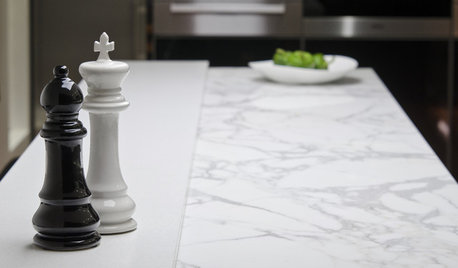

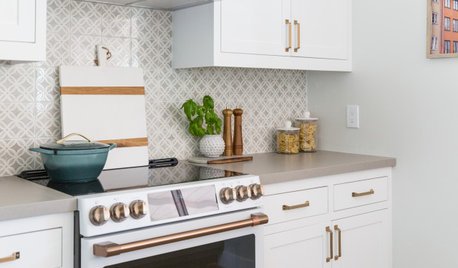

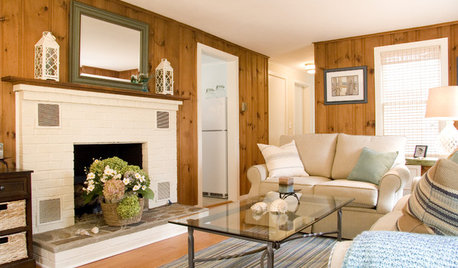
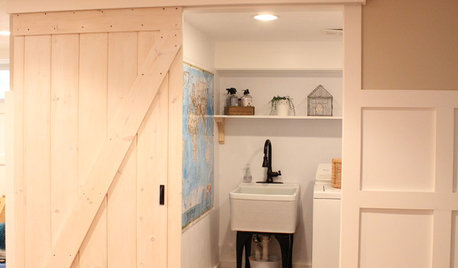

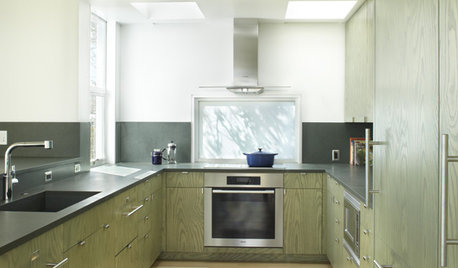
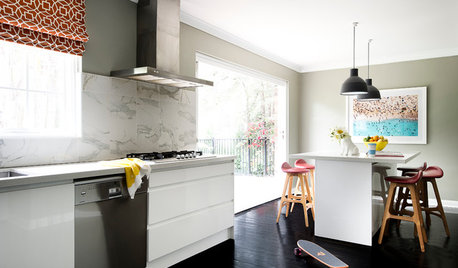






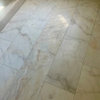
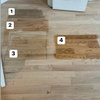


fgraham01